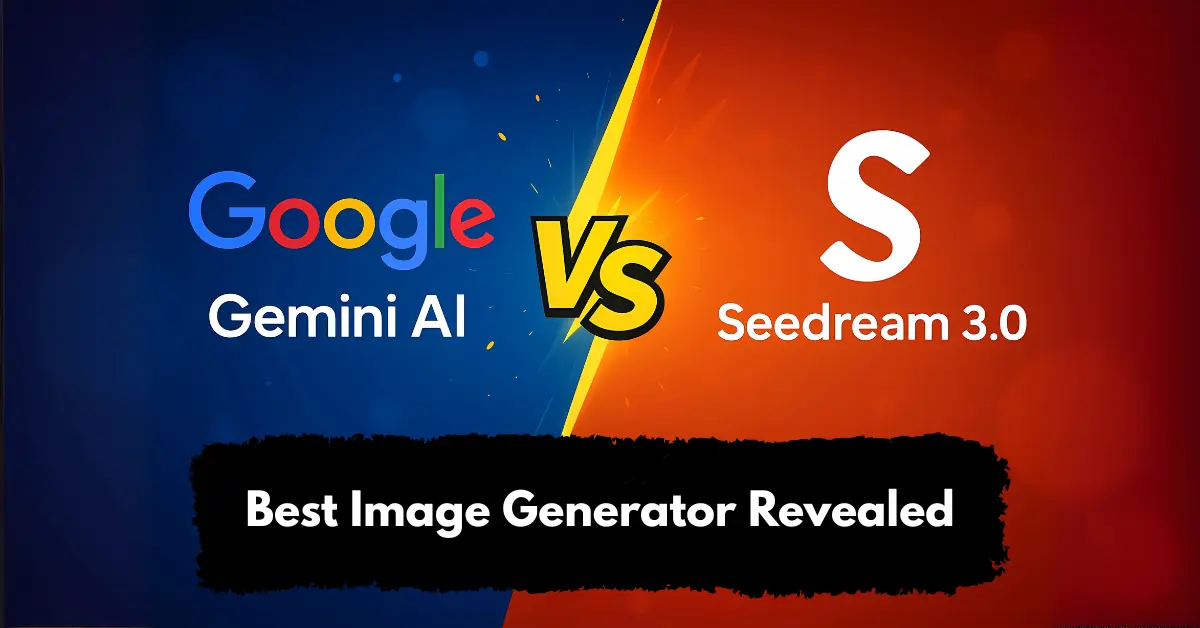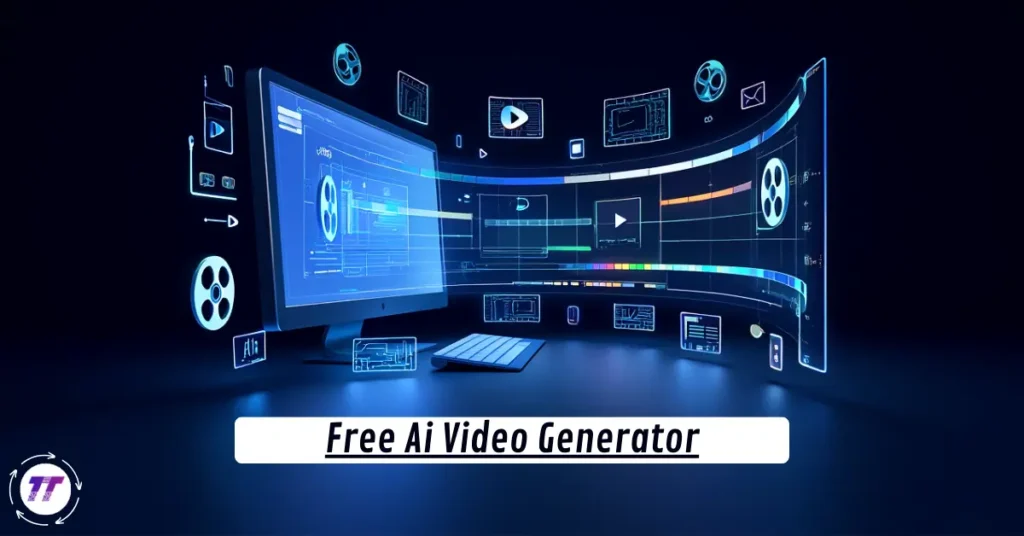Google Gemini AI vs Seedream 3.0 – Best Image Generator Revealed may seem overwhelming at first, but with the right comparison, you can easily decide which tool creates the most realistic and creative images for your needs.
Why Image Generators Are a Big Deal?
The world of AI image generation is moving fast. Just a few years ago, making professional-level digital art required hours of design work in Photoshop or the help of a skilled artist. Today, tools like Google Gemini AI and Seedream 3.0 can generate jaw-dropping visuals in seconds—whether you need realistic portraits, cinematic landscapes, or futuristic concept art.
But here’s the big question: Which image generator is actually better—Google Gemini AI or Seedream 3.0?
To answer this, let’s break it down from the basics to advanced insights, compare their strengths, and reveal the best choice for different use cases.
What Is Google Gemini AI?
Google Gemini AI is Google’s latest multimodal AI model, which means it doesn’t just understand text—it can also interpret and generate images, code, and even audio.
For image generation specifically, Gemini AI is designed to:
- Turn text into images (like “a cat wearing a crown sitting on a throne”).
- Edit existing images with AI-powered refinements.
- Generate realistic faces with fine details, skin textures, and lighting.
- Integrate seamlessly with other Google products.
It’s built to be fast, accessible, and versatile, making it a great choice for beginners and professionals alike.
What Is Seedream 3.0?
Seedream 3.0 is a newer but highly specialized AI image generator known for its artistic precision. Unlike Gemini, which is a generalist model, Seedream 3.0 focuses mainly on ultra-realistic, high-resolution images.
Key highlights include:
- Hyper-realistic faces (often indistinguishable from real photos).
- Customizable styles like anime, 3D renders, oil paintings, or cinematic photography.
- Advanced fine-tuning for creators who want consistent results across multiple images.
- Better handling of fantasy or surreal concepts compared to most AI models.
In short, Seedream 3.0 is like having a specialized artist who can adapt to multiple creative styles.
Google Gemini AI vs Seedream 3.0: Key Differences
Let’s break down the head-to-head comparison:
| Feature | Google Gemini AI | Seedream 3.0 |
| Core Strength | Multimodal (text, image, audio, code) | Specialized in ultra-realistic images |
| Image Style | Balanced realism + creativity | Hyper-realistic, artistic, surreal |
| Ease of Use | Beginner-friendly (simple prompts) | More advanced (requires detailed prompts) |
| Speed | Very fast (optimized for Google’s ecosystem) | Slower but higher-quality results |
| Integration | Works with Google tools (Docs, Search, Drive) | Standalone creative platform |
| Best For | Everyday use, casual creators, business teams | Artists, designers, filmmakers, marketers |
Which Image Generator Produces More Realistic Results?
If your goal is realism, Seedream 3.0 has the edge. Its ability to create lifelike faces, cinematic shadows, and small details (like hair strands or reflections in the eyes) is unmatched.
For example:
- A fashion brand could use Seedream 3.0 to generate model photos without needing an actual photoshoot.
- A filmmaker could generate concept art for sci-fi characters that look ready for the big screen.
On the other hand, Gemini AI produces images that are slightly more stylized, making them great for advertising, casual content, and social media posts.
Which Image Generator Is Easier to Use?
If you’re a beginner, Google Gemini AI is hands-down easier. Its prompts don’t require too much detail, and you’ll usually get a good result on the first try.
Example: Typing “a dog astronaut floating in space” into Gemini gives you a polished, share-worthy result.
Meanwhile, Seedream 3.0 demands more precise prompts (like specifying lighting, lens type, art style, etc.) to get the best output. Professionals love this control, but beginners may find it overwhelming.
Advanced Insights: How Each AI Handles Complex Prompts
One of the toughest challenges for AI image generators is handling complex prompts with multiple conditions.
- Gemini AI: Best for balanced scenes where you want clarity and structure. Example: “A futuristic city skyline at sunset with flying cars and glowing neon lights.”
- Seedream 3.0: Best for artistic freedom and surreal creativity. Example: “A crystal dragon emerging from a frozen waterfall under northern lights.”
In short: Gemini = structured realism. Seedream = artistic mastery.
Real-Life Examples
- Marketing Agency Case
- Gemini AI helped a marketing team create Instagram ad graphics in seconds.
- They didn’t need a designer—just a simple prompt delivered multiple variations.
- Gemini AI helped a marketing team create Instagram ad graphics in seconds.
- Independent Artist Case
- A digital artist used Seedream 3.0 to generate fantasy character portraits for a book cover.
- The detail was so good that readers thought the characters were drawn by a professional illustrator.
- A digital artist used Seedream 3.0 to generate fantasy character portraits for a book cover.
Step-by-Step Guide: Choosing the Right Image Generator
- Define Your Goal
- Social media graphics → Gemini AI
- Hyper-realistic art/design → Seedream 3.0
- Social media graphics → Gemini AI
- Test a Simple Prompt
- Try the same text on both and compare outputs.
- Try the same text on both and compare outputs.
- Adjust for Style
- If you need fine details, refine prompts in Seedream.
- If you want speed and convenience, stick with Gemini.
- If you need fine details, refine prompts in Seedream.
- Check Licensing & Rights
- Gemini AI is safer for business use since Google enforces clear policies.
- Seedream offers more freedom for personal projects.
- Gemini AI is safer for business use since Google enforces clear policies.
FAQs About Google Gemini AI vs Seedream 3.0
1. Which AI is better for beginners?
Google Gemini AI is better for beginners because it’s simple, fast, and works well with short prompts.
2. Which AI makes more realistic human faces?
Seedream 3.0 creates more photorealistic and detailed faces.
3. Can I use these tools commercially?
Yes, both allow commercial use, but Google Gemini AI has clearer licensing policies for businesses.
4. Is Seedream 3.0 free to use?
Seedream 3.0 typically offers limited free credits, but full access may require a subscription.
5. Can Gemini AI also edit existing images?
Yes, Gemini can refine, expand, or edit existing photos, making it a flexible tool.
Conclusion: The Best Image Generator Revealed
So, which one wins in the battle of Google Gemini AI vs Seedream 3.0?
- If you want speed, simplicity, and integration with daily tools, choose Google Gemini AI.
- If you want unmatched realism, artistic control, and cinematic quality, go for Seedream 3.0.
Ultimately, the best choice depends on your goal. Many professionals actually use both—Gemini for quick drafts and Seedream for final masterpieces.
👉 Before you decide, check out our guide on best prompts to generate correct faces in Gemini Nano Banana to maximize your results with AI image generators.
Try both tools for free, test them with your own prompts, and see which one feels right for your creative projects.


